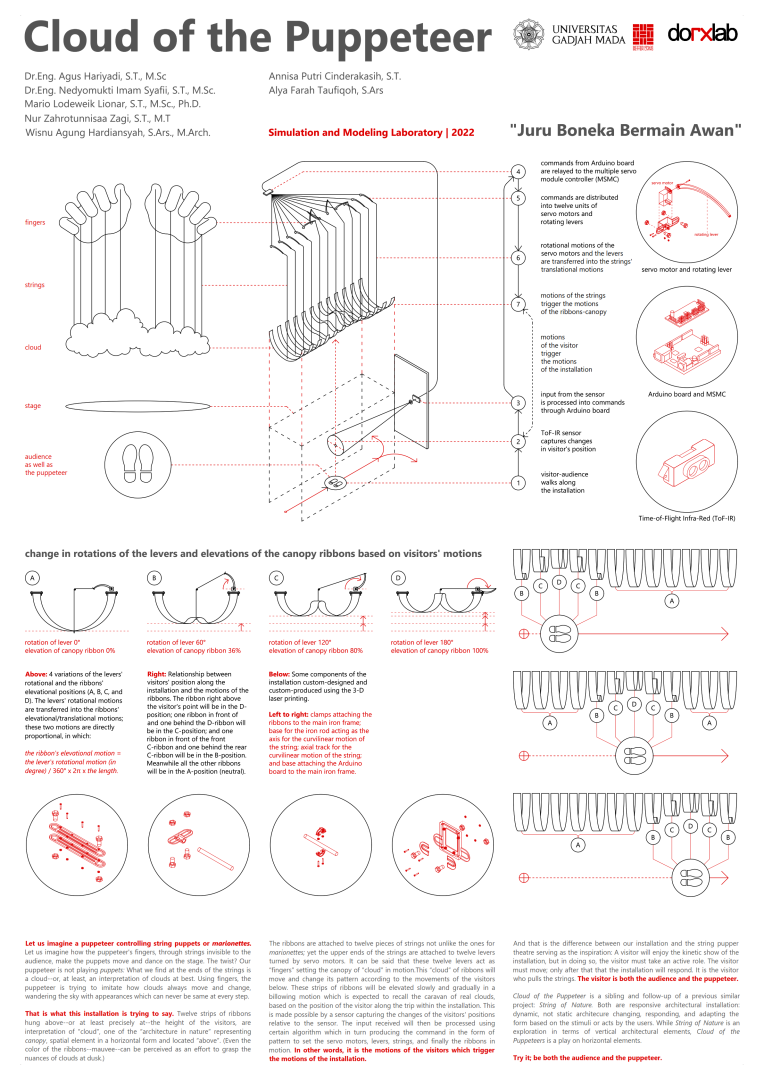
Let us imagine a puppeteer controlling string puppets or marionettes. Let us imagine how the puppeteer’s fingers, through strings invisible to the audience, make the puppets move and dance on the stage. The twist? Our puppeteer is not playing puppets: What we find at the ends of the strings is a cloud–or, at least, an interpretation of clouds at best. Using fingers, the puppeteer is trying to imitate how clouds always move and change, wandering the sky with appearances which can never be same at every step.
That is what this installation is trying to say. Twelve strips of ribbons hung above–or at least precisely at–the height of the visitors, are interpretation of “cloud”, one of the “architecture in nature” representing canopy, spatial element in a horizontal form and located “above”. (Even the color of the ribbons–mauve–can be perceived as an effort to grasp the nuances of clouds at dusk).
The ribbons are attached to twelve pieces of strings not unlike the ones for marionettes; yet the upper ends of the strings are attached to twelve levers turned by servo motors. It can be said that these twelve levers act as “fingers” setting the canopy of “cloud” in motion. This “cloud” of ribbons will move and change its pattern according to the movements of the visitors below. These strips of ribbons will be elevated slowly and gradually in a billowing motion which is expected to recall the caravan of real clouds, based on the position of the visitor along the trip within the installation. This is made possible by a sensor capturing the changes of the visitors’ positions relative to the sensor. The input received will then be processed using certain algorithm which in turn producing the command in the form of pattern to set the servo motors, levers, strings, and finally the ribbons in motion. In other words, it is the motions of the visitors which trigger the motions of the installation.
And that is the difference between our installation and the string puppet theatre serving as the inspiration: A visitor will enjoy the kinetic show of the installation, but in doing so, the visitor must take an active role. The visitor must move; only after that that the installation will respond. It is the visitor who pulls the strings. The visitor is both the audience and the puppeteer.
Cloud of the Puppeteer is a sibling and follow-up of a previous similar project: String of Nature. Both are responsive architectural installation: dynamic, not static architecture changing, responding, and adapting the form based on the stimuli or acts by the users. While String of Nature is an exploration in terms of vertical architectural elements, Cloud of the Puppeteers is a play on horizontal elements.
Try it; be both the audience and the puppeteer.
